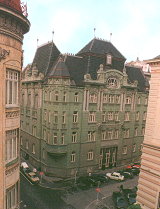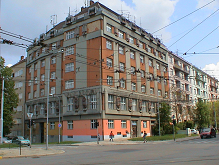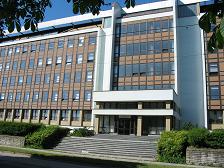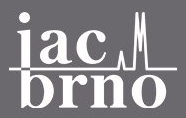History
 History of the Institute commenced in 1956 when the Laboratory for Gas Analysis had been established by transferring a small research group from the Institute for Petroleum Research in Brno to the former Czechoslovak Academy of Sciences. The establishing of the Laboratory had largely been made possible through the foresight of František Šorm, at the time the Scientific Secretary of the Czechoslovak Academy of Sciences.
History of the Institute commenced in 1956 when the Laboratory for Gas Analysis had been established by transferring a small research group from the Institute for Petroleum Research in Brno to the former Czechoslovak Academy of Sciences. The establishing of the Laboratory had largely been made possible through the foresight of František Šorm, at the time the Scientific Secretary of the Czechoslovak Academy of Sciences.
The leader of the original research group was Jaroslav Janák. He served as the first director of the Institute until 1980, and the Institute gained a widespread international recognition under his leadership.
 Since 1956, the Institute has gradually grown in both staff and research topics. The growth has been marked by several formal milestones, the last of these being the establishment of the Institute of Analytical Chemistry of the Academy of Sciences of the Czech Republic in 1992. The original subjects of gas analysis and gas chromatography have been complemented by liquid chromatography and electromigration methods. The subsequent additions have included field-flow fractionation, supercritical fluid chromatography and extraction, and selected specific techniques of environmental analytical chemistry. The history of the Institute has benefited from an extensive "cross-pollination" among the individual research teams and topics. In particular, this has applied to the design and development of laboratory gadgets and instruments for analytical-scale separations, and "couplings" between a separation method and a detection technique.
Since 1956, the Institute has gradually grown in both staff and research topics. The growth has been marked by several formal milestones, the last of these being the establishment of the Institute of Analytical Chemistry of the Academy of Sciences of the Czech Republic in 1992. The original subjects of gas analysis and gas chromatography have been complemented by liquid chromatography and electromigration methods. The subsequent additions have included field-flow fractionation, supercritical fluid chromatography and extraction, and selected specific techniques of environmental analytical chemistry. The history of the Institute has benefited from an extensive "cross-pollination" among the individual research teams and topics. In particular, this has applied to the design and development of laboratory gadgets and instruments for analytical-scale separations, and "couplings" between a separation method and a detection technique.
 In 1991, the Institute has moved into new, more spacious premises. This event has secured better conditions for modern research.
In 1991, the Institute has moved into new, more spacious premises. This event has secured better conditions for modern research.In 1992, the number of employees of the Academy of Sciences of the Czech Republic had been cut down significantly because of budget restrictions. As a result, some institutes of the Academy have been dissolved, including the former Institute of Nuclear Biology and Radiochemistry in Prague. However, the research group of trace inorganic analysis from that institute has become a detached workplace of the Institute of Analytical Chemistry. This event has marked an important change in scope of the scientific program of the Institute, adding some selected methods of atomic spectrometry to the Institute's former program concerned entirely with analytical separations.
The most recent additions to the research program of the Institute include applications of mass spectrometry and establishment of two new research groups in 2001 focussed on miniaturized instrumentation and proteomics with focus on mass spectrometry applications. In 2010 both departments merged into the Department of Bioanalytical Instrumentation.
Currently, the efforts of our five departments (Bioanalytical Instrumentation, Electromigration Methods, Fluid Phase Separations, Environmental Analysis and Trace Element Analysis) aim toward utilization of the analytical chemistry in diverse branches of science and technology including medicine, environmental protection, foodstuff production, and high-purity materials. We engage in developments of theoretical background, applications, and instrumentation of separation and spectroscopic methods of analytical chemistry. The in-house technologies allow production and characterization of microfluidics and nanomaterials. The separation branch of our research includes methods employing electric field, sorption, fluid flow, force field, chemical reaction, and their combinations as the driving forces for separation. The spectroscopy branch includes mass spectrometry, atomic spectroscopy, and developments of optical spectroscopic techniques and their applications in the separation methods. As an important and inseparable by-product, the theoretical outlets also provide new, original knowledge applicable in other branches of science, primarily in biochemistry and physical chemistry.




